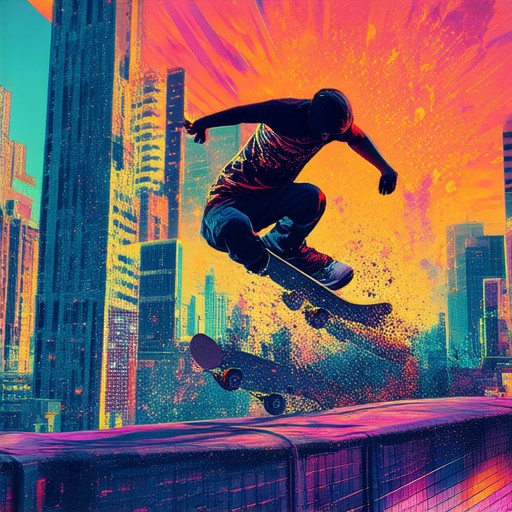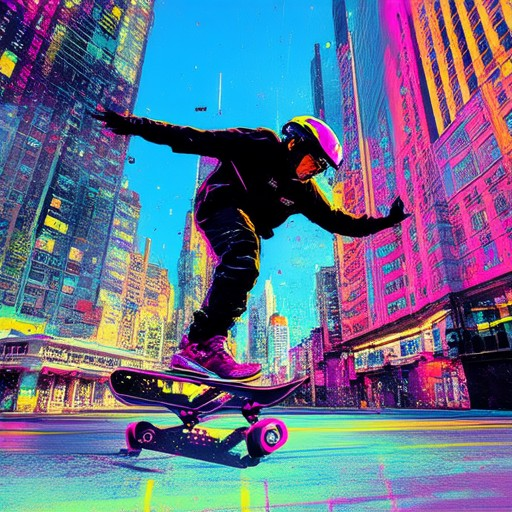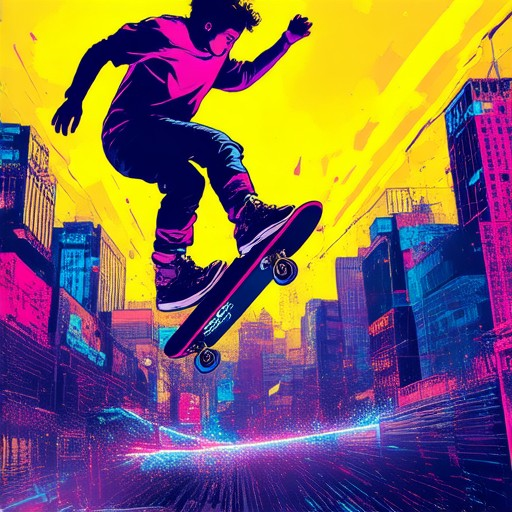Skateboarding culture and trends continue to evolve, shaping not just the world of sports but also influencing fashion, art, and even urban development. With roots tracing back to Southern California in the 1940s, skateboarding has grown into a global phenomenon, attracting diverse communities and fostering unique subcultures. Its impact extends beyond the board, as it has redefined modern lifestyles, inspired iconic fashion styles, and contributed to the transformation of public spaces into vibrant canvases for artistic expression. Understanding the beliefs and values of skaters offers insight into their broader cultural significance, while exploring the historical milestones and regional preferences reveals the dynamic nature of this ever-changing activity. As skateboarding continues to transcend boundaries, it remains a fascinating subject of study, blending tradition with innovation to shape tomorrow’s trends.
Key Takeaways
– Originated from surf culture in Southern California in the mid-20th century, adapting longboards for urban use.
– Evolved from beach to street skating, influenced by car culture and iconic spots like Venice Beach and Santa Monica.
– Popular in the U.S., Australia, Japan, Brazil, and Europe, driven by cultural influence, skate parks, and passionate communities.
– Became a trend in the 1970s, rising alongside freestyle skateboarding and innovative tricks.
– Influenced fashion, music, and art, cementing its status as a cultural phenomenon.
Explore the vibrant skateboarding community and latest trends at Kickflip Boards.

What is Skateboarding Culture Like?
Skateboarding culture is a vibrant, diverse, and inclusive community that celebrates creativity, freedom, and self-expression. It transcends age, gender, and background, bringing people together through a shared passion for riding boards and pushing boundaries.
Community and Belonging
Skateboarding culture thrives on a strong sense of community. Skateparks and street spots often serve as gathering places where skaters share tricks, offer encouragement, and collaborate on creative projects. The culture is built on mutual respect and camaraderie, fostering a supportive environment for all skill levels.
Individuality and Self-Expression
One of the defining characteristics of skateboarding culture is its emphasis on individuality. Skaters often express themselves through unique styles, clothing, and tricks, reflecting their personal identity and creativity. This freedom of expression is central to the culture, allowing individuals to stand out and embrace their own rhythm.
Creativity and Innovation
The culture is also deeply rooted in creativity and innovation. Skaters constantly push the limits of what can be done on a board, developing new tricks and combining elements in unexpected ways. This spirit of experimentation drives the continuous evolution of skateboarding and keeps the culture fresh and dynamic.
Progression and Learning
Skateboarding culture encourages learning and progression. Whether mastering basics like ollies and grind techniques or exploring advanced maneuvers like kickflips and varial flips, skaters are always striving to improve. This mindset fosters a growth-oriented community where everyone can develop their skills and contribute to the culture.
Inclusivity and Diversity
Skateboarding culture has come a long way in embracing diversity. What was once seen as a male-dominated sport has opened its doors to women, non-binary individuals, and people of all backgrounds. Events like Girls Skate Day and LGBTQ+ skate competitions highlight the culture’s commitment to inclusivity and representation.
Global Influence and Fashion
Skateboarding culture has had a significant impact on global fashion and lifestyle. The iconic look of skateboards—hoodies, skate shoes, and baggy clothes—has influenced streetwear trends worldwide. Skateboard designs and art have also become popular in urban fashion and graffiti.
Skateboarding culture is more than just a sport or hobby; it’s a lifestyle that embodies freedom, creativity, and connection. Its enduring appeal lies in its ability to bring people together while celebrating individuality, making it a truly unique and impactful part of modern society.
How Has Skateboarding Influenced Culture?
Skateboarding has become more than just a recreational activity—it’s a cultural phenomenon that has shaped art, fashion, music, and even everyday language. Its influence extends far beyond the board itself, impacting urban environments and inspiring creative expressions worldwide. Here’s a breakdown of its profound effects:
Cultural Impact on Art and Design
Skateboarding has played a pivotal role in transforming public spaces into dynamic canvases. Street artists and skateboarders alike have repurposed urban areas, turning them into vibrant showcases of creativity. The culture of skateboarding has inspired urban art movements, with murals and installations adorning city walls. This transformation has redefined public spaces, making them more interactive and visually engaging.
Fashion and Lifestyle
The skateboarding lifestyle has significantly influenced fashion trends, particularly in urban clothing. Brands have embraced the rebellious and edgy aesthetic associated with skateboarding, creating apparel that reflects the culture. From hoodies to cargo pants, skate-inspired fashion continues to dominate retail shelves, appealing to a broader audience interested in streetwear.
Music and Subcultures
Skateboarding has also been a catalyst for music subcultures. Many iconic bands and musicians got their start in the skate scene, drawing inspiration from the rebellious spirit of the sport. Skateboarding festivals and events often feature live performances by emerging artists, further solidifying the connection between music and skate culture. The beats of skateboarding videos have influenced genres ranging from punk rock to electronic music.
Language and Slang
Skateboarding has left an indelible mark on popular culture through its unique terminology. Words like “kickflip,” “ollie,” and “grind” have entered mainstream vocabulary, becoming shorthand for specific actions and experiences. This slang reflects the creativity and innovation inherent in the skateboarding community, showcasing its ability to influence everyday language.
Educational and Social Initiatives
Skateboarding has also been used as a tool for education and social change. Programs that teach kids how to skateboard often emphasize teamwork, perseverance, and problem-solving skills. These values extend beyond the board, fostering a sense of community and empowerment in urban areas. Skateboarding events and competitions frequently host workshops aimed at introducing new participants to the sport and its cultural significance.
Sustainable and Eco-Friendly Practices
In recent years, skateboarding has embraced eco-friendly practices, encouraging riders to reuse and recycle materials. Skateboard companies now offer biodegradable boards and components made from sustainable materials. This shift aligns with broader environmental movements, demonstrating skateboarding’s role in promoting responsible consumption and ecological awareness.
Global Adoption and Cross-Cultural Exchange
Skateboarding has transcended geographical boundaries, becoming a universal language of self-expression. Skaters from diverse backgrounds gather in shared spaces, creating a global network of creativity and innovation. This cross-cultural exchange has led to the development of unique regional styles, blending local influences with skateboarding traditions.
By embracing skateboarding, individuals contribute to a culture that values freedom, creativity, and resilience. Its influence continues to grow, shaping the way we interact with our surroundings and each other. Whether through art, fashion, music, or community initiatives, skateboarding remains a powerful force in modern culture.

Beliefs of Skaters as a Subculture
The skateboarding subculture is defined by a unique set of shared values, experiences, and perspectives that distinguish it from mainstream society. At its core, skateboarding fosters a distinct worldview that emphasizes freedom, authenticity, and individualism. Here are the key beliefs that define this vibrant and dynamic subculture:
Core Values of Skateboarding
- Freedom and Expression : Skateboarders often view their boards as extensions of themselves, allowing them to express creativity and explore environments in ways that other activities cannot. This freedom is central to the skateboarding lifestyle.
- Authenticity : The act of skating is seen as genuine and unfiltered, reflecting the true personality of the skateboarder. This authenticity is highly valued and often celebrated within the subculture.
- Individualism : Skateboarding encourages self-reliance and personal growth. Skaters often learn by trial and error, developing their own style and approach to the sport.
- Anti-Authoritarian Sentiment : Skateboarding has historically been associated with rebellion and resistance against established norms. This sentiment is rooted in the sport’s roots in surfing and punk rock culture.
Historical Context and Evolution
The skateboarding subculture emerged in the late 1970s and early 1980s, primarily in Southern California. It quickly spread worldwide, becoming a symbol of youth culture and countercultural movements. The rise of skate videos like “Dogtown and Z-Boys” further cemented skateboarding’s status as a defining element of modern subculture.
Community and Collaboration
Skateboarding is not just an individual activity but also a deeply social one. Many skateboarders embrace a DIY (Do-It-Yourself) ethos, building their own ramps, parks, and communities. This collaborative spirit is evident in the way skaters often share tricks, equipment, and knowledge.
Aesthetic and Lifestyle
The skateboarding subculture is deeply tied to its visual and stylistic elements. Skateboard designs, street art, and fashion all play significant roles in shaping the identity of the subculture. Skate shops and brands like Kickflip Boards contribute to this aesthetic by offering unique and innovative products that reflect the skateboarding lifestyle.
Influence of Music and Film
Skateboarding has always had a strong connection to music and film. Punk rock bands and surf culture have been instrumental in shaping the subculture’s identity. Movies like “Lords of Dogtown” and documentaries like “Bones Brigade” have further popularized skateboarding’s cultural significance.
Challenges and Resistance
Despite its widespread popularity, skateboarding remains a subculture that often operates outside mainstream norms. Issues like commercialization and gentrification threaten the subculture’s authenticity, but skateboarders continue to resist these forces through grassroots efforts and community-building.
Conclusion
The skateboarding subculture is a rich and multifaceted tapestry, characterized by its emphasis on freedom, authenticity, and individualism. It reflects the values of rebellion and creativity while fostering a strong sense of community among its participants. As the sport continues to evolve, it remains a powerful symbol of youth culture and self-expression.

What Culture Started Skateboarding?
Skateboarding originated from the surf culture in Southern California during the mid-20th century. Surfers in California, faced with flat ocean waves, sought a new way to challenge themselves. They adapted longboards used for surfing into skateboards, creating a new pastime that quickly gained popularity among young people.
The culture of skateboarding evolved from the beachside communities, blending together elements of surfing, cars, and street culture. Skaters began experimenting with tricks and styles, leading to the development of iconic skateboard designs and movements. By the 1970s and 1980s, skateboarding had become a defining part of Californian youth culture, with iconic spots like Venice Beach and Santa Monica becoming hubs for skaters.
The skateboarding culture expanded beyond beaches, influencing fashion, music, and art. Skate parks began appearing worldwide, and events like the X Games and the Olympics have further legitimized the sport. Today, skateboarding continues to thrive as a global phenomenon, with its roots firmly planted in thesurf culture of Southern California.
Kickflip Boards supports this vibrant community by providing resources and insights into the latest trends and techniques in skateboarding. Explore our collection of boards and accessories to join the ride today.
- Surfing culture in Southern California
- Adaptation of longboards for urban use
- Evolution from beach to street skating
- Influence of local surf spots and car culture
For more information on skateboarding history and culture, visit Kickflip Boards and explore our comprehensive guide to skateboarding styles and techniques.
What Country Is Skateboarding Most Popular In?
Skateboarding has a vibrant and diverse following worldwide, with several countries standing out for their passion and dedication to the sport. While the United States remains a hub for skateboarding culture, countries like Australia, Japan, Brazil, and those in Europe have also emerged as hotspots for the activity.
- United States : Skateboarding originated in Southern California, USA, and the country continues to be a major player in the sport. The culture, fashion, and competitions all contribute to its widespread popularity.
- Australia : With its beaches and surf culture, Australia has developed a strong skateboarding scene. Cities like Sydney and Melbourne host numerous events and competitions.
- Japan : The country has a significant following due to its influence from American culture and a thriving market for skateboarding products and apparel.
- Brazil : Known for its vibrant street culture, Brazil has become a major force in skateboarding, particularly in cities like Rio de Janeiro and São Paulo.
- Europe : Countries like France, Germany, and the UK have large skateboarding communities, benefiting from urban environments and a strong underground scene.
The popularity of skateboarding in these countries is driven by factors such as cultural influence, the availability of skate parks, and a passionate community of skateboarders. Events like the X Games and Burton Snowboard World Championships further elevate the sport’s visibility globally.

When did skateboarding become a trend?
Skateboarding began gaining significant popularity in the mid-20th century, particularly in the 1970s. During this decade, the sport experienced a notable explosion in California, driven by the rise of the freestyle skateboarding movement. This style borrowed elements from surfing culture, blending agility and creativity with skateboarding techniques.
Historical Context
Skateboarding as a recreational activity emerged in the 1950s and 1960s, primarily among teenagers. However, it wasn’t until the 1970s that it truly became a widespread trend. The arrival of better-designed boards and the development of new tricks allowed skateboarders to explore creative expressions, attracting a broader audience.
The Rise of Freestyle Skateboarding
The 1970s marked the golden age of freestyle skateboarding, characterized by innovative tricks and a vibrant community. Skaters like Rodney Smith and Tony Alva became household names, pushing the boundaries of what could be achieved on a board. This era also saw the influence of surf culture, with many skaters adopting a laid-back, beach-bum aesthetic.
Cultural Impact
Skateboarding in the 1970s transcended simply being a sport. It became a cultural phenomenon, influencing fashion, music, and art. The iconic hairstyles, clothing styles, and even slang of the time reflected the skateboarding lifestyle. This period also saw the establishment of skate parks, further legitimizing the activity and making it accessible to a wider demographic.
Conclusion
By the 1970s, skateboarding had evolved from a niche pastime into a full-fledged cultural trend. Its growth during this era laid the foundation for the diverse and dynamic scene we see today. The innovation, creativity, and community spirit of the 1970s skateboarding culture continue to inspire skateboarders worldwide.




0 Comments